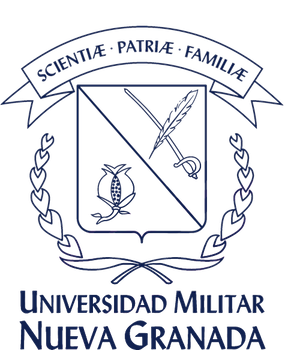Estrategias de autodefensa contra ciberataques de actores no estatales
Resumen
Este artículo tiene como objetivo analizar y proporcionar una conceptualización de vanguardia de la noción de autodefensa dentro del derecho internacional y el ámbito cibernético. En la primera sección, el documento explora los conceptos de autodefensa, ataque y el uso de la fuerza en el derecho internacional, seguido de su aplicación en el ciberespacio. La siguiente sección aplica específicamente el concepto de autodefensa en caso de un ciberataque perpetrado por actores no estatales. La conclusión destaca que el contexto del ámbito cibernético introduce la posibilidad de que las agresiones de actores no estatales puedan tener consecuencias incluso más graves que los ataques cinéticos tradicionales. Este artículo sirve como base para futuras discusiones en el sector de la defensa y el derecho internacional.
Descargas
Referencias bibliográficas
Alston, P. (2005). The "Not-a-Cat" Syndrome: Can the International Human Rights Regime Accommodate Non-State Actors? In Philip Alston (Eds.), Non-State Actors and Human Rights (p. 14). Oxford University Press.
Andress, J., & Winterfeld, S. (2011) Non-State Actors in Computer Network Operations. In Cyber Warfare Techniques, Tactics and Tools for Security Practitioners Syngress (pp. 193-206), (p. 196), (p.197), (p. 201), (pp. 198-199). https://doi.org/10.1016/B978-1-59749-637-7.00011-3
Akande, D., & Liefländer, T. (2013). Clarifying Necessity, Imminence, and Proportionality in The Law of Self-Defense. In American Journal of International law (Vol. 107-3) (p. 563). https://doi.org/10.5305/amerjintelaw.107.3.0563
Byers, M., (2003). Preemptive Self-defense: Hegemony, Equality and Strategies of Legal Change. In Journal of Political Philosophy (Vol.11-2) (p.181).https://doi.org/10.1111/1467-9760.00173
Carr, J., (2012). Responding to International Cyber Attacks as Acts of War. In Inside Cyber Warfare (p. 49) O'Reilly Media.
Dinstein, Y., (2002). Computer Network Attacks and Self-defense. In International law Studies (Vol 76) (p. 110). US Naval War College.
Dinstein, Y., (2011). Controversial consequences of the change in the legal status of war. In War, Aggression and Self-Defence. (pp. 181-182). Cambridge University Press. https://doi.org/10.1017/CBO9780511920622
Dinstein, Y., (2011). The Concept of Self-Defence. In War, Aggression and Self-Defence. (p. 203) (p. 204) (p. 205). Cambridge University Press.https://doi.org/10.1017/CBO9780511920622
Finlay, L., & Payne, C., (2019). The Attribution Problem and Cyber Armed Attacks." In American Journal of International Law Unbound (Vol. 113) (pp. 202-206). Cambridge University Press.
https://doi.org/10.1017/aju.2019.35
Gray, C., (2018). The Use of Force and the International Legal Order. In International law (pp. 601-635). Oxford University Press. https://doi.org/10.1093/he/9780198791836.003.0020
International Committee of the Red Cross (ICRC), Protocol Additional to the Geneva Conventions of 12 August 1949, and relating to the Protection of Victims of Non-International Armed Conflicts (Protocol II), 8 June 1977, 1125, UNTS 609
Legality of the Use by a State of nuclear weapons in Armed Conflict, Advisory Opinion, ICJ. Reports (1996) (p. 39)
Mayer, L., (2018) Defining cyberterrorism. In Revista Chilena de derecho y tecnología (Vol.7-2) (p.6) Centro de Estudios en Derecho Informático de la Facultad de Derecho de la Universidad de Chile. https://doi.org/10.5354/0719-2584.2018.51028
Military and Paramilitary Activities in and Against Nicaragua (Nicaragua v United States), Merits, (1986) ICJ Rep1986 (p.14) (p. 195) (p. 191) (p.194) (p. 115) (pp. 194 -195)
Non-State Actors in International law, Final Report of the ILA Committee on Non-State Actors (2016) (pp. 4-6)
Oil Platforms (Islamic Republic of Iran v. United States of America), Mertis, (2003) ICJ Rep. 2003. (p. 161 para.1) (p. 161 paras 51,64)
Oorspronga, F., Ducheineband, P., & Pijpers, P. (2023) Cyber-attacks and the right of self-defense: a case study of the Netherlands. In Policy Design and Practice (Vol.6-2023) (p.2 20). Taylor & Francis.https://doi.org/10.1080/25741292.2023.2179955
Pangrazzi, S. (2021) Self-Defence against Cyberattacks? Digital and Kinetic Defence in Light of Article 51 UN-Charter (Policy Brief). ICT for Peace Foundation (pp. 18-19) https://ict4peace.org/publications/self-defence-against-cyberattacks-digital-and-kinetic-defence-in-light-of-article-51-un-charter/
Proulx, V. (2005). Babysitting Terrorists: Should States be Strictly Liable for Failing to Prevent Transborder Attacks? In Berkeley Journal of International law. (Vol.23-3) (p.615). Berkeley Law. https://doi.org/10.15779/Z38CK90
Roscini, M. (2014). Cyber Operations and the jus ad bellum. In Cyber Operations and the Use of Force in International law. (p. 43) (p. 91). Oxford Academic. https://doi.org/10.1093/acprof:oso/9780199655014.003.0002.
Schmitt, M. (2014). The Law of Cyber Warfare: Quo Vadis? In Stanford Law & Policy Review (Vol 25-2) (pp. 273-274). Stanford University. https://ssrn.com/abstract=2320755
Schmitt, M. (2017). Due Diligence. In Tallinn Manual 2.0 on the international law Applicable to Cyber Operations. (p. 48). Cambridge University Press.https://doi.org/10.1017/9781316822524
Schmitt, M. (2017). Jurisdiction. In Tallinn Manual 2.0 on the international law Applicable to Cyber Operations. (p. 54). Cambridge University Press.https://doi.org/10.1017/9781316822524
Schmitt, M. (2017). Law of international responsibility. In Tallinn Manual 2.0 on the international law Applicable to Cyber Operations. (p. 94). Cambridge University Press. https://doi.org/10.1017/9781316822524
Schmitt, M. (2017). The use of force. In Tallinn Manual 2.0 on the international law Applicable to Cyber Operations. (pp. 334-337) (pp. 330-333), (p. 339) (p. 345) (p. 348) (p. 351). Cambridge University Press.https://doi.org/10.1017/9781316822524
Schmitt, M. (2022). The Law of Cyber Conflict: Quo Vadis 2.0? In The Future Law of Armed Conflict. (p. 222). Oxford Academic. https://doi.org/10.1093/oso/9780197626054.003.0007
Sigholm, J. (2016). Non-State Actors in Cyberspace Operations. In Journal of Military Studies. Vol 4(1) (p. 11). The Finnish Society of Military Sciences.https://doi.org/10.1515/jms-2016-0184
United Nations. (2004). A more secure world: our shared responsibility: report of the High-level Panel on Threats, Challenges, and Change. (pp. 53-64) United Nations Dept. of Public Information.
White House. (2002). The national security strategy of the United States of America. https://history.defense.gov/Portals/70/Documents/nss/nss2002.pdf?ver=oyVN99aEnrAWijAc_O5eiQ%3d%3d

Derechos de autor 2023 Revista de Relaciones Internacionales, Estrategia y Seguridad

Esta obra está bajo una licencia internacional Creative Commons Atribución-NoComercial-SinDerivadas 4.0.











